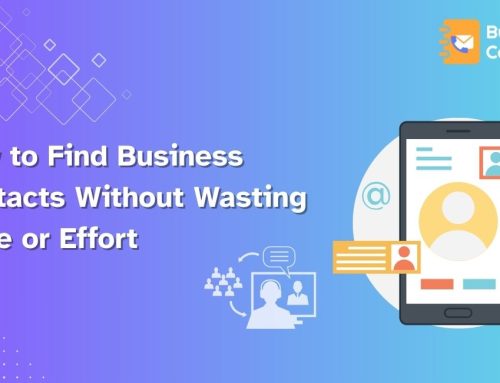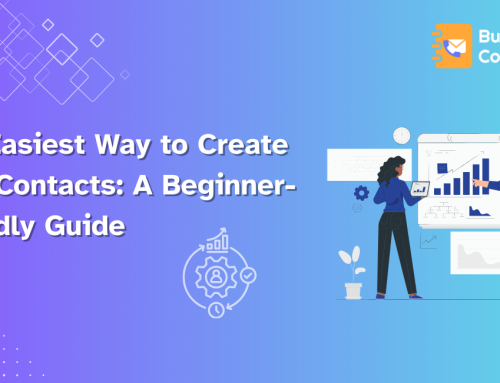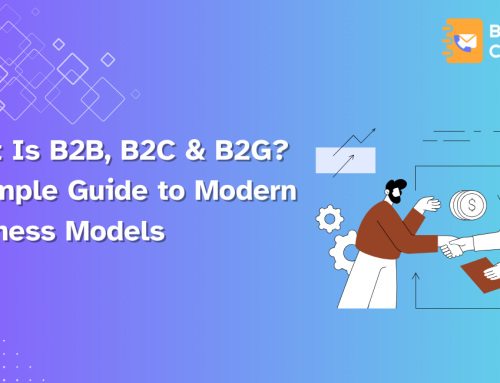In today’s fast-moving B2B world, accurate and verified contact data isn’t just nice to have; it’s the foundation of every successful marketing and sales strategy. Without reliable data, your outreach campaigns fail, your emails bounce, and your sales team wastes time chasing the wrong people. That’s why learning how to choose the best B2B contact provider matters so much. A strong provider helps you target the right decision-makers, improve conversion rates, and build lasting relationships with prospects. On the other hand, the wrong provider can lead to wasted budgets, compliance risks, and lost opportunities.
Step 1: Define Your Business Needs
Before you evaluate any provider, you must clearly define your business requirements. Too many companies skip this step and end up overwhelmed by flashy features they don’t actually need. Start by identifying your Ideal Customer Profile (ICP). Ask yourself:
- Which industries do you target most?
- What size companies fit your product or service? (Startup, SMB, or enterprise?)
- Do you want to connect with C-level executives, mid-level managers, or technical staff?
- Are you selling globally, or do you want a provider with strong local coverage?
Next, determine the data points that are most relevant. If you plan to cold call, prioritize direct dials. If LinkedIn outreach plays a big role, make sure the provider offers accurate profile links. Finally, consider integrating with your tech stack. Your contact data should flow easily into your CRM, marketing automation platform, or sales engagement tools. If a provider doesn’t integrate well, you’ll waste countless hours manually cleaning and importing data. When you take time to define your needs upfront, you avoid overspending and ensure the provider you choose truly fits your business.
Step 2: Prioritize High-Quality and Verified Data
Data quality can make or break your campaigns. If half your emails bounce or your phone calls reach the wrong person, your ROI disappears. High-quality data means the provider uses rigorous verification processes. The best providers combine:
- Automated verification tools that check email deliverability in real time.
- Human validation teams that review records manually.
- Continuous monitoring systems that flag outdated contacts and update them quickly.
Moreover, ask providers how often they update their data. Some refresh quarterly, while others update daily. The more frequently they update, the fresher your leads will be. For example, imagine you target IT directors at mid-sized companies. If a provider hasn’t refreshed their database in six months, you might call ten people only to find that four have already switched jobs. That wastes sales time and damages your email sender’s reputation. Therefore, always ask about accuracy rates. A strong provider should confidently guarantee 90%+ accuracy and offer refunds or replacements for invalid data.
Step 3: Evaluate Coverage and Depth
Having millions of records means nothing if they don’t match your ICP. That’s why you must examine both coverage (breadth) and depth (detail). First, check whether the provider covers your target industries and geographies. Some providers specialize in North America, while others have strong data for Europe or Asia. If you plan to expand globally, make sure your provider offers reliable international coverage.
Second, evaluate the depth of insights. Do they only provide basic details like names and emails? Or can they give you firmographics (company size, revenue, industry), technographics (software and tools used), and intent signals (buying behavior)? The more detail you have, the more precisely you can personalize your outreach. For example, if you know a company has recently adopted a competitor’s software, you can craft a targeted pitch that addresses their exact pain points. In short, coverage ensures you reach enough people, and depth ensures you reach the right people with the right message.
Step 4: Ensure Compliance and Privacy
Data compliance isn’t optional anymore; it’s a legal necessity. Using data that doesn’t meet privacy regulations can expose your company to lawsuits, fines, and reputational damage. Therefore, always ask providers how they collect and process data. Do they follow GDPR, CCPA, and other regional privacy laws? Do they honor opt-outs and provide clear ways for data subjects to request removal?
Legitimate providers will be transparent about their compliance practices. They’ll explain whether they use consent-based collection, third-party partnerships, or public data sources. For example, if you run campaigns in the European Union, you must confirm that your provider complies with GDPR. Otherwise, even a single complaint could trigger serious penalties. By choosing a compliant provider, you protect your business legally and ethically while building trust with your prospects.
Step 5: Check Update Frequency
Business data changes faster than most people realize. Employees switch jobs, companies merge, and phone numbers change constantly. In fact, studies show that B2B data decays by 30-40% every year. If your provider doesn’t update frequently, your database will go stale quickly. Outdated data leads to bounced emails, disconnected numbers, and wasted campaigns.
Therefore, always ask:
- How often do you update your database?
- Do you refresh all records, or only certain segments?
- Can you receive real-time updates through an API?
The best providers refresh their database continuously and give you alerts when records change. This ensures your team always works with the most current information.
Step 6: Assess Customer Support
Even with great data, issues will arise. That’s why strong customer support is essential. Ask providers about their support options. Do they offer live chat, phone support, or email assistance? Do you get a dedicated account manager who understands your goals? Do they provide onboarding sessions and training resources?
In addition, check how quickly they respond to problems. If your campaigns stall due to a technical issue, you need fast solutions, not a support ticket that sits unanswered for days. Good support not only solves problems but also helps you maximize value. A reliable provider should act as a partner, guiding you to get the most out of your investment.
Step 7: Review Pricing Models
Pricing models vary widely. Some providers charge subscriptions, others sell credits, and some use pay-as-you-go models. However, don’t get distracted by the cheapest option. Low-cost providers often sacrifice quality, leaving you with inaccurate data. Instead, evaluate the overall value.
Ask about hidden costs. Some providers charge extra for API usage, duplicate cleaning, or re-verification. Others limit the number of downloads or contacts you can access. Also, think long-term. A provider that looks affordable now may become expensive as your needs grow. Therefore, choose a provider with a pricing model that scales with your business. The right choice balances cost, quality, and flexibility.
Step 8: Test and Compare Providers
Never commit to a provider without testing. Reputable companies offer free trials or sample data. Use these to evaluate accuracy, relevance, and deliverability. Moreover, run small campaigns to test bounce rates and response rates. This hands-on testing gives you real insights into how well the data works for your ICP.
In addition, research the provider’s reputation. Read reviews, check case studies, and ask for references. A proven track record builds confidence. Finally, compare how providers deliver data. Some offer bulk downloads, while others provide seamless CRM integrations or real-time APIs. Are you trying to find a solution to make your process more efficient? Select the option that best fits your needs.
Step 9: Use the Data Effectively
Finding the right provider is just the beginning of the journey. You must also use the data effectively to see results. Start by integrating the data into your CRM or sales platform. Standardize formats, remove duplicates, and set rules for data entry. This prevents errors and keeps your system clean. Next, design workflows for lead scoring, outreach, and follow-ups. For example, assign higher scores to decision-makers or companies that match your ICP more closely.
In addition, perform regular audits. Remove bounced emails, update job changes, and eliminate duplicates. A clean database increases efficiency and improves campaign performance. Finally, measure success with key metrics like open rates, response rates, and conversions. If results fall short, analyze whether the issue lies in data quality, targeting, or messaging.
Step 10: Avoid Common Mistakes
When choosing a provider, many businesses fall into common traps:
- They focus only on price and end up with low-quality data.
- They prioritize quantity over quality, buying massive lists that don’t match their ICP.
- They ignore compliance, exposing themselves to legal risks.
- They skip the trial stage and regret their purchase later.
By staying disciplined and following the steps above, you can avoid these costly mistakes and make smarter decisions.
Final Thoughts
Learning how to choose the best B2B contact provider is crucial for driving sales and marketing success. When you define your needs, demand verified data, ensure compliance, and test thoroughly, you set your business up for long-term growth. At BusinessContacts.io, we deliver accurate, compliant, and up-to-date B2B contact data that helps you connect with the right decision-makers faster. With flexible pricing models, reliable support, and deep insights, we empower businesses to scale outreach with confidence.




